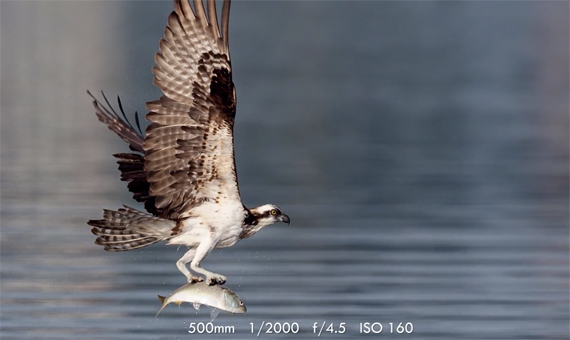Ever wonder how photographers manage to capture fast-flying birds not just fully in the frame, but also in focus? There’s more to it than just luck. In the video below, wildlife photographers Tony and Chelsea Northrup take us on a quick romp through some of the settings and procedures that will help you catch your feathered friends both in frame and in focus:
Wildlife photography is no walk in the park. Birds, especially, present unique challenges, not only appearing suddenly, but often moving so quickly as to be beyond range before you’ve even lifted your camera. That’s why having your settings dialed in and practicing closer to home can make all the difference.
Use Autofocus
While some of the settings the Northups advise are pretty self-explanatory, selecting focus points takes a bit more know-how, especially if you’re new to photography. If you’ve never played around with your auto focus settings, you might want to take some time exploring your camera’s menus or even reading the manual.
Most modern DSLRs allow you to choose what points in the frame the auto focus (AF) will concentrate on. The Northups advise setting your AF to all points if you’re working with a simple background. This will give you a bit more leeway in your shot–anything you manage to get in the frame is likely to be in focus. In the photo below the water provides a simple background, making it easier for the AF to pick out the subject.
Things get a bit hairier in a more complex background, where you have a number of things competing for your camera’s attention. The Northrups advise setting the AF to a single point. While this will give you less leeway for error (you’ll need to hit your subject dead-on), it will tell your AF exactly where in the frame to focus.
Beyond this, you’ll also want to set your AF to continuous (AF-C). This will allow your camera to analyze the subject’s movement and place the focus where it predicts tho subject will move to. It will also automatically readjust the focus if you or the subject move. (How this is done varies from camera to camera, but usually you either continue half-pressing the shutter button or hold down the AF button.)
Research Your Subject
One of the more overlooked tips that the Northups give is really getting to know your subject. While you don’t need to be a wildlife biologist to take excellent wildlife photos, you’ll have much more success if you spend a lot of time in the field learning about the species you want to photograph. Understanding their behavior and habits and getting familiar with their habitat will make it much more likely that you’ll score some great shots. And what better excuse to get out into nature?
Like This Article?
Don't Miss The Next One!
Join over 100,000 photographers of all experience levels who receive our free photography tips and articles to stay current:







Leave a Reply